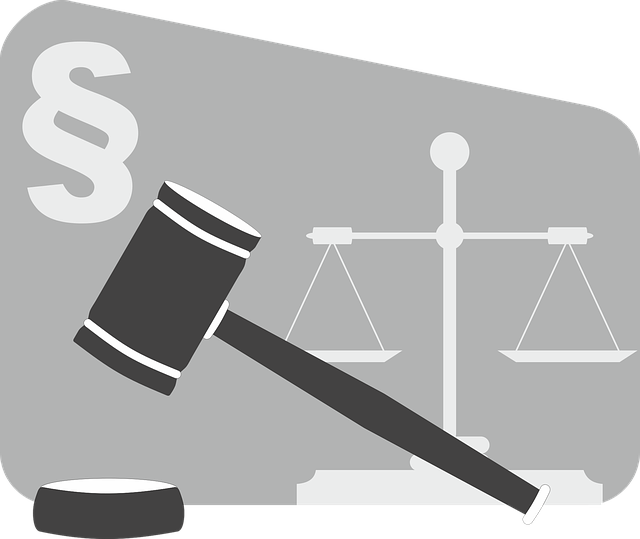Consumer protection laws vary by region, aiming to shield individuals from unethical business practices and promote market transparency through administrative and civil proceedings. Administrative actions, initiated by regulatory bodies, focus on systemic issues and preventative measures, such as imposing fines and ensuring compliance, while civil lawsuits, driven by individuals or groups, seek damages for specific wrongs, empowering consumers to hold businesses accountable. Understanding these differences is crucial for businesses navigating regulatory requirements and for consumers seeking justice through strategic legal advocacy.
Consumer protection suits are a vital mechanism ensuring businesses uphold ethical standards. This article unravels the intricacies of two primary approaches: administrative proceedings and civil lawsuits. Understanding these differences is crucial for both consumers and businesses. We’ll explore how each process works, their key distinctions, and when to employ each strategy. By the end, you’ll grasp the nuances of consumer protection laws, empowering informed decisions in navigating legal actions. Learn about the unique aspects that set administrative and civil proceedings apart, enabling you to make strategic choices.
- Understanding Consumer Protection Laws and Their Purpose
- Administrative Proceedings: A Quick Overview
- Civil Lawsuits: What You Need to Know
- Key Differences Between the Two Approaches
- When to Choose Each Type of Legal Action
Understanding Consumer Protection Laws and Their Purpose

Consumer protection laws are designed to safeguard individuals from unfair business practices and ensure market transparency. These regulations vary by jurisdiction but share a common goal: to uphold ethical standards in commercial transactions. Understanding these laws is crucial for both consumers and businesses, as it empowers former to make informed decisions and holds the latter accountable.
When it comes to enforcement, consumer protection suits can take two primary forms: administrative and civil proceedings. The key difference lies in who initiates the process and the potential outcomes. Administrative actions are typically launched by regulatory bodies or government agencies, focusing on systemic issues and aiming for preventative measures. In contrast, civil lawsuits are brought forth by individuals or groups who believe they’ve been wronged, often seeking damages and other remedies. Throughout these various stages of the investigative and enforcement process, from initial complaints to appeals and jury trials (in some cases), both administrative and civil proceedings serve as essential tools in upholding consumer rights.
Administrative Proceedings: A Quick Overview

Administrative proceedings differ significantly from civil lawsuits or even criminal cases. In contrast to civil litigation where individuals or entities sue each other for damages, administrative processes involve government agencies enforcing laws and regulations. These proceedings are typically designed to protect consumers, ensuring businesses comply with legal standards set by regulatory bodies.
Unlike jury trials in civil cases, administrative hearings often focus on resolving disputes internally without a jury. The goal is not to punish wrongdoers but to rectify issues, impose fines or sanctions, and ensure compliance. This streamlined process can lead to a complete dismissal of all charges if the business demonstrates full cooperation and rectifies the violation promptly.
Civil Lawsuits: What You Need to Know

When it comes to Consumer Protection Suits, understanding the nuances between administrative and civil proceedings is crucial. While both aim to protect consumers, they operate under distinct legal frameworks with separate procedures and potential outcomes. Administrative processes are typically initiated by regulatory bodies to enforce compliance with consumer protection laws, focusing on swift action and preventative measures. In contrast, civil lawsuits involve private entities suing for damages, highlighting a more specific harm or violation.
Civil lawsuits offer consumers an avenue to seek redress for personal injuries or financial losses resulting from business practices that breach established protections. Known for their ability to secure significant compensation, these high-stakes cases often feature attorneys advocating for their clients with an unprecedented track record of success. This strategic approach ensures consumers have a powerful tool against businesses that fail to uphold their legal obligations, fostering accountability and deterring future violations.
Key Differences Between the Two Approaches

When comparing differences between administrative and civil proceedings in consumer protection suits, it’s crucial to understand their distinct approaches and focuses. Administrative proceedings, often handled by government agencies, emphasize regulatory enforcement and deterrence. These processes aim to protect the public interest on a broad scale, ensuring businesses comply with established consumer protection laws and regulations. The primary goal is prevention, and the outcomes can include fines, cease-and-desist orders, or even revoking business licenses.
In contrast, civil proceedings involve private parties—often consumers or advocacy groups—suing businesses for alleged violations of consumer rights. This approach focuses on individual or class action remedies, seeking compensation for harm suffered by consumers. While both paths are vital in the broader white collar defense landscape, they cater to different needs. Civil proceedings address specific wrongdoings and seek redress for affected parties, while administrative actions maintain regulatory integrity and promote ethical business practices within the corporate and individual clients spectrum.
When to Choose Each Type of Legal Action

When deciding on legal action for consumer protection, understanding the differences between administrative and civil proceedings is crucial. Administrative processes are typically initiated by regulatory bodies to enforce compliance with established rules and regulations. These proceedings are often faster and less formal compared to civil lawsuits. They are designed to protect the public interest and can lead to penalties or orders compelling businesses to change their practices. On the other hand, civil actions are brought forth by individuals or groups who have suffered harm due to alleged misconduct. This path is chosen when seeking specific damages or remedies for personal injuries, property damage, or financial losses incurred as a result of unethical business practices.
The choice between these two depends on various factors, including the nature and extent of the violation, the desired outcome, and applicable laws across the country. While administrative actions focus on preventing future violations and ensuring compliance, civil lawsuits aim to compensate victims and hold respective businesses accountable for their actions. Avoiding indictment is a key consideration in consumer protection suits, making the selection of legal action strategy an important decision that can significantly impact the resolution of the case.
Consumer protection suits are a vital tool for ensuring businesses uphold ethical standards. Understanding the nuances between administrative and civil lawsuits is crucial for consumers and legal professionals alike. While both serve to protect rights, they differ in their approaches, timelines, and outcomes, with administrative proceedings offering quicker resolution through regulatory bodies, and civil lawsuits providing more detailed remedies through courts. Knowing when to employ each strategy enables effective navigation of consumer protection laws, ultimately fostering a fair and transparent marketplace.






